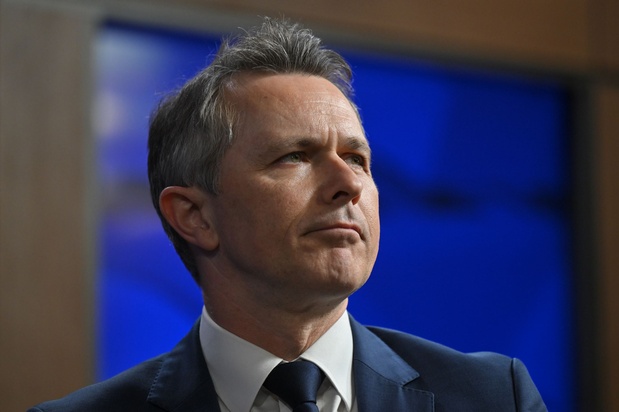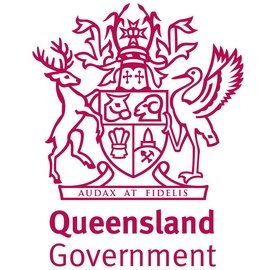Released today, the Government’s 10-year Better and Fairer Schools Agreement (BFSA) offers $16 billion to public schools over the next decade.
It sets out specific targets for participating jurisdictions, including bolstering the teaching workforce, lifting NAPLAN results and Year 12 retention rates, as well as boosting student attendance.
The Northern Territory wasted no time becoming the first jurisdiction to sign on today, with Western Australia expected to follow suit shortly.
The remaining states and territories, which have been stalling in hope of a 5 per cent increase in federal funding, as opposed to the current 2.5 per cent on offer, now have a small window of time to confirm if they are in on the deal.
Clare said he had made it clear that the additional $16 billion the Commonwealth has put on the table will be tied to reforms to ensure the money “make a difference to the kids who really need it”.
“Practical things like phonics checks and numeracy checks, evidenced-based teaching and catch-up tutoring, to identify kids who need additional support and make sure they get it,” he said.
“There are no blank cheques here … that means tying that funding to the sort of things will help more kids catch up, keep up and finish school.”
The agreement will require states and territories to reach the “highest rate of Year 12 certification ever achieved”, with one key target stating that by 2030, 83.8 per cent of students will complete the final year of schooling, up from 76.3 in 2022.
Other performance targets in the deal include:
- Reducing the proportion of students in the NAPLAN ‘Needs Additional Support’ proficiency level for reading and numeracy by 10 per cent by 2030, and increasing those in the ‘Strong’ and ‘Exceeding’ bands by 10 per cent in the same timeframe.
- Increasing the Student Attendance Rate to pre-COVID level levels (91.4 per cent) by 2030, up from 88.6 per cent in 2023.
- Increasing the engagement rate (completed or still enrolled) of initial teacher education students to 71 per cent by 2035, up from 61 per cent in 2022.
- Increasing the proportion of Aboriginal and Torres Strait Islander people (aged 20-24) attaining a Year 12 or equivalent qualification to 96 per cent by 2031, up from 68.4 per cent in 2021. This reflects a target in the National Agreement on Closing the Gap.
The BFSA does not specify when all public schools will be fully funded across Australia.
Shadow Minister for Education Sarah Henderson said the reforms are inadequate and lack detail.
She accused the Government of starting a ‘full-blown’ school funding war.
“The draft agreement contains plenty of motherhood statements but says nothing about improving the national curriculum or delivering the critical reforms needed to combat classroom disruption,” Henderson said today.
“The Coalition’s senate inquiry recommended a national behaviour curriculum and other important reforms to improve classroom engagement and learning which have been ignored by the government.”
“Jason Clare … has botched the opportunity to deliver the national reforms every child needs to reach his or her best potential.”
AEU federal president Correna Haythorpe has slammed the ‘ultimatum’ issued, saying the fact that five states and one territory are refusing to sign the agreement is a “clear sign that the Albanese Government’s offer is not good enough”.
The union has called for the Government to fulfill its promise to provide full funding to public schools by increasing its contribution from 22.5 per cent to 25 per cent, rather than “pressuring states to sign a deal which falls short”.
Haythorpe implored that critical funding for public schools should not be compromised “amidst a political spat between governments” and that federal policymakers cannot expect to implement a reform agenda without resolving funding negotiations first.
“With only 1.3 per cent of public schools funded at the minimum benchmark, the Schooling Resource Standard, the stark reality is that public schools have waited more than a decade for the vital resources that they need to deliver high quality education for every child.
“This [deal has] the potential to entrench inequality in a way that we have not seen since the Coalition Government changed the Australian Education Act in 2017…” Haythorpe said.
The AEU Victorian Branch has also taken issue with the Government’s ‘take it or leave it approach’ to public school funding, arguing the deal puts Prime Minister Anthony Albanese “on the brink of a broken promise”.
President Meredith Peace said the state’s public school staff and students should not be used as “political pawns in a school funding spat”.
“The deal on the table, of an additional 2.5 per cent from the Commonwealth or a rollover of the current agreement with no additional funding, does not deliver this and could entrench inequality in a way that we have not seen since the federal Coalition Government was in power.
“Resources delayed are resources denied,” Peace said.
The union leader noted that in the lead-up to the last federal election, Albanese promised to ensure that every public school was on the pathway to 100 per cent of funding to the Schooling Resource Standard.
“…the offer from the Albanese Labor Government is not good enough. We support the [Victorian] Allan Government’s demand that the Commonwealth contribute a further 5 per cent in addition to the existing 20 per cent they already provide,” Peace added.
Speaking today from the Northern Territory, Clare said money is ‘always the sticking point’ in state-federal relations.
“If the Northern Territory can chip in, and they’re throwing in $300 million as part of this billion-dollar deal, I think other states and territories can as well,” he said.
The BFSA includes a number of ‘national reform directions’, the first being ‘equity and excellence’.
This includes:
- Whole-of-system and/or whole-of-school approaches that identify student learning needs early and provide ‘tiered and targeted, intensive supports’, in line with evidence-based teaching and a ‘multi-tiered systems of support’ model.
- A Year 1 phonics check and an early years of schooling numeracy check (once available) to enable all schools to identify learning gaps early.
A ‘strong and sustainable workforce’ is another reform focus, involving initiatives that help attract and retain teachers and school leaders, and those that reward experienced teachers who work in disadvantaged schools.
Also noted are initiatives that provide educators with evidence-based professional learning and ‘quality-assured’ curriculum resources that are developed in partnership with teachers.
The Government said the new agreement will also strengthen the reporting and public transparency requirements around how taxpayer funding is invested, but without lumping an additional burden onto schools.
This includes a new public reporting dashboard and requirements for jurisdictions to outline how the additional funds are being invested in the key reform areas.
But Greens spokesperson on Primary & Secondary Education, Senator Penny Allman-Payne, has criticised the agreement, suggesting it locks in public school underfunding and fails to provide a clear roadmap to deliver on its objectives.
“The BFSA reforms would require states and territories to do more surveillance, more monitoring and more testing. It does nothing to fundamentally reform our outdated education model, make schools more inclusive or reverse the growing inequities between the public and private systems,” she said.
“The Education Minister is waving the mission accomplished flag while teachers are fleeing the system, student disengagement and school can’t/school refusal is rising and cashed-up private schools draw more and more kids out of the public system.”
Clare said the deal is ultimately designed to reverse declining student outcomes.
“NAPLAN results tell us that one in 10 young people at the moment are below the minimum standard we have set and one in three kids from poor families are below that standard,” he said.
“The number of kids finishing high school is going backwards. In the last seven years it’s dropped from 85 per cent to 79 per cent.
“In public schools the drop is even bigger, from 83 per cent to 73.6 per cent.
“We’ve got to turn this around. That’s what this agreement is all about.”














